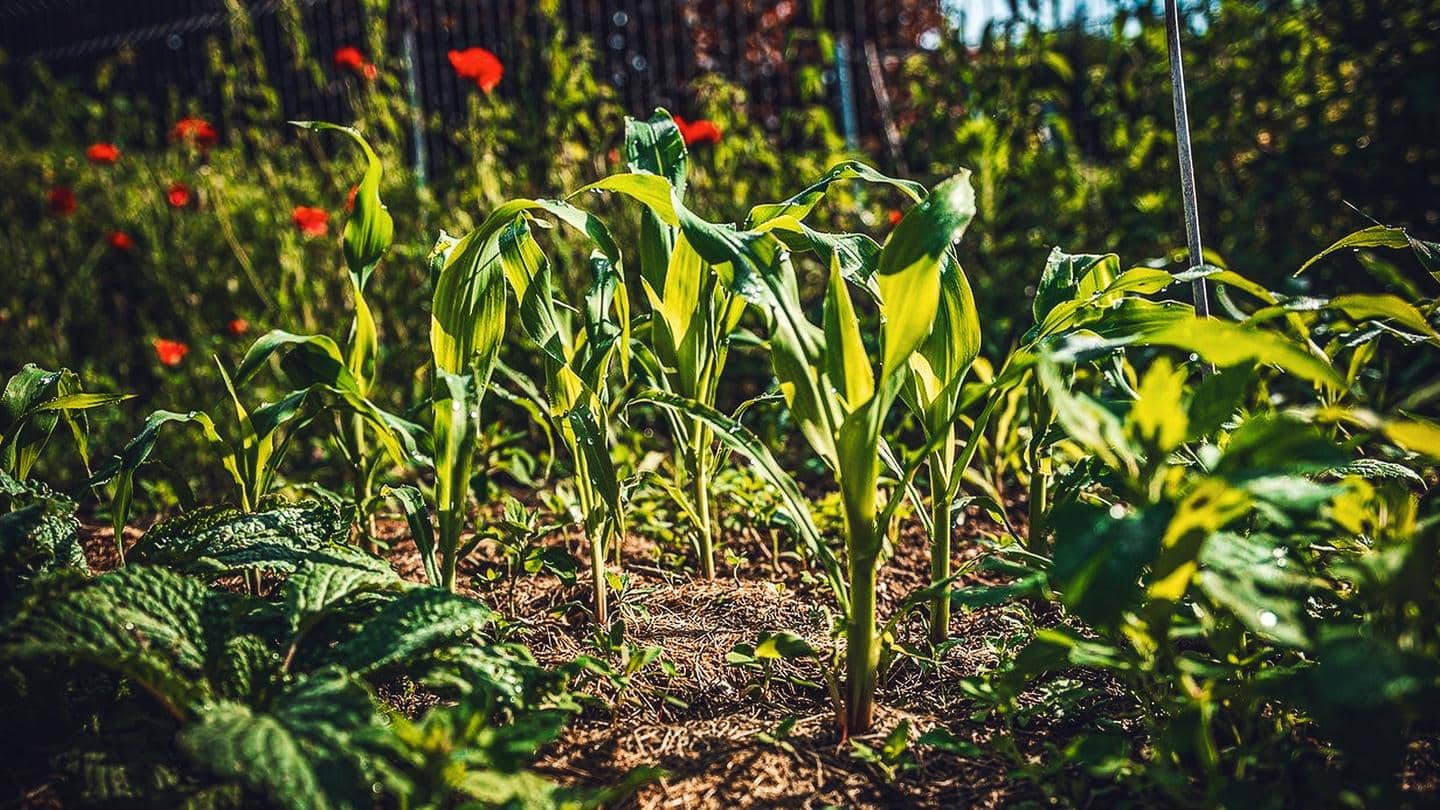
How to create a kitchen garden
What's the story
Have you ever tried to grow fresh herbs and vegetables in your backyard or garden?
Several people have taken to this practice as homegrown produce is fresh, and so healthier.
A kitchen garden can also save you some money.
Growing your own food is extremely satisfying and also assures pesticide-free and chemical-free herbs and veggies on your plate.
Here's more to it!
Spot
Find the right spot with adequate sunlight
Finding the right spot with adequate sunlight is extremely important to create your own kitchen garden.
Most plants need at least three to six hours of sunlight daily along with adequate air circulation and warm temperature.
You can place the pots on your windowsills or balcony where there is sufficient direct sunlight. Also, turn the plants every other day to ensure even growth.
Choice
Select the right pots and containers
You can use an earthen pot or even reuse your plastic bottles or glass containers to grow your kitchen garden plants.
Make sure the container is six inches tall and has drainage holes to prevent clogging.
Also, fill up the container with pebbles to prevent excess water drainage.
Start with sowing a few seeds instead of sowing too many in a single pot.
Soil
Choose the right soil
Choosing the right soil is extremely important to provide essential nutrients to your plants.
You can buy ready-made bags of potting mix containing cocopeat, soil, and compost, or collect regular soil from your neighborhood and add compost or organic matter to it.
You can also mix red soil with regular soil to grow healthy plants.
Sprinkle organic fertilizer every month to recharge the soil.
Seeds
Get good quality saplings and seeds
Visit your nearby nursery to pick up good-quality seeds and saplings for your kitchen garden.
After sowing the seeds, remember to cover the pot or container with a mesh to prevent excess sunlight and air from entering them.
You can choose plants like basil, mint, curry leaves, tomato, brinjal, beans, coriander, spinach, and lemongrass to start with and then add more varieties.
Watering
Water your plants
Once you are done with the above steps, it's time to see the seeds sprout and grow into little plants.
Water your plants every two days to provide them with adequate moisture. Make sure there is enough space in the pot above the soil level to prevent overflow of water.
Add water if your finger feels dry when placed one inch into the soil.
Information
Maintain your plants and take care of them
Remember to prune the plants regularly to ensure healthy and strong growth. However, do not cut more than one-third of the plant at a time. Use small pieces of natural ingredients like eggshells, ground coffee, or dried banana peel to fertilize the soil every month.